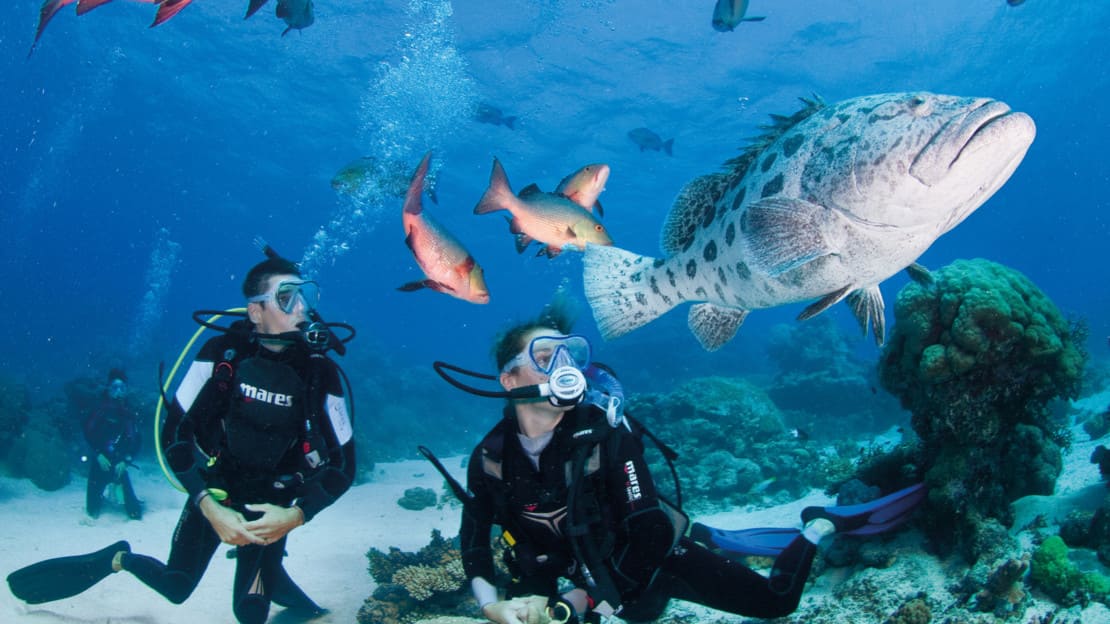When exploring the wonders of the Great Barrier Reef, divers and marine enthusiasts often seek out the famous “Great Eight.” These eight iconic species not only represent the extraordinary biodiversity of the reef but are also crucial to its ecological balance. This article delves into each of these remarkable creatures, highlighting their unique characteristics and the vital roles they play within this underwater paradise.
The Great Barrier Reef: An Overview

The Great Barrier Reef, a UNESCO World Heritage site, is the largest coral reef system in the world, stretching over 2,300 kilometers along the coast of Queensland, Australia. It is home to thousands of marine species, making it a hotspot for biodiversity. Not only is it a diverse ecosystem, but it also serves as a barrier to protect the mainland from powerful ocean waves and storms. The reef’s vibrant colors and crystalline waters attract millions of visitors yearly, drawn by the promise of underwater adventures and the chance to witness its natural wonders. Included in this expansive ecosystem are the Great Eight, a selection of species that embody the reef’s beauty and ecological importance.
The Great Eight: A Closer Look

Below, we explore each of the Great Eight species, providing insights into their features and significance. These fascinating creatures showcase the range of life forms that call the Great Barrier Reef home:
-
- Clownfish: Known for their vibrant orange color and white stripes, clownfish are often found living among anemones. They have a symbiotic relationship with these stinging creatures, providing protection in exchange for a safe home.
- Hawksbill Turtle: This critically endangered species is recognized for its beautiful shell and feeds primarily on sponges. Hawksbill turtles play an essential role in maintaining the health of coral reefs.
- Dugong: Often referred to as “sea cows,” these gentle herbivores graze on seagrass, helping to maintain vibrant underwater meadows. They are vital to the ecosystem and contribute to nutrient cycling.
- Manta Ray: Majestic in the water, manta rays glide gracefully with their large wingspans. These filter feeders are known for their intelligence and play a crucial role in controlling plankton populations.
- Giant Clam: These impressive clams can grow to be over four feet long and can live for over a century. They provide habitat for smaller marine creatures and are a vital part of the reef’s biodiversity.
- Great White Shark: As apex predators, great white sharks maintain balance in marine ecosystems. They regulate the populations of fish and marine mammals, ensuring a healthy reef environment.
- Coral: Often called the “rainforest of the sea,” corals are essential for the reef’s structure and provide a habitat for countless species. Healthy coral reefs are critical for maintaining biodiversity.
- Nudibranch: These colorful sea slugs are not only beautiful but serve as indicators of a healthy reef. They play a vital role in the marine food web, feeding on various algae and small invertebrates.
Why the Great Eight Matter

The Great Eight encapsulates the importance of preserving the Great Barrier Reef’s delicate ecosystem. Each species serves a unique role, contributing to the overall health of the reef. The interdependence of these creatures fosters a balanced environment, which is essential for the survival of not only marine life but also the countless human communities that rely on the reef for their livelihoods. Environmental threats such as climate change, pollution, and overfishing put immense pressure on these species, making it imperative to implement conservation strategies. Protecting the Great Eight and their habitat ensures that future generations can experience the wonder of the Great Barrier Reef.
Exploring the Great Barrier Reef

Travelers seeking to explore the Great Barrier Reef can engage in various activities, from snorkeling and scuba diving to boat tours. Various tours are designed to provide close encounters with the Great Eight, showcasing their beauty while ensuring minimal environmental impact. Guided tours are recommended as they are conducted by professionals who emphasize reef safety and sustainability. For those who prefer to stay dry, glass-bottom boat tours allow visitors to witness the vibrant marine life from above. Regardless of the chosen method, experiencing the Great Barrier Reef is an adventure like no other and serves as a reminder of the importance of preserving such natural wonder.
Conclusion
The Great Barrier Reef’s Great Eight represents only a fraction of the incredible biodiversity and ecological importance of this marine treasure. From the colorful clownfish to the majestic manta rays, each species plays a vital role in maintaining the health of the reef. Protecting these iconic creatures and their habitat is crucial to ensuring the balance of this unique ecosystem. By raising awareness about the Great Eight and supporting conservation efforts, we can collectively help preserve the Great Barrier Reef for future generations, allowing more people to enjoy its beauty and marvel at its wonders.
FAQs
The Great Eight consists of the clownfish, hawksbill turtle, dugong, manta ray, giant clam, great white shark, coral, and nudibranch. These species represent the incredible biodiversity of the reef.
2. Why are the Great Eight important?
Each species in the Great Eight plays a unique role in maintaining the ecological balance of the reef, contributing to overall biodiversity and health.
3. How can I see the Great Eight in their natural habitats?
Visitors can experience the Great Barrier Reef through activities such as snorkeling, scuba diving, and taking guided boat tours, all of which provide opportunities to see these magnificent creatures.
4. What threats do the Great Eight face?
Threats include climate change, pollution, and overfishing, which can significantly impact these species and their habitats.
5. How can I help conserve the Great Barrier Reef?
You can support conservation efforts by spreading awareness, participating in marine cleanup activities, and choosing sustainable tourism options that prioritize the health of the reef.




